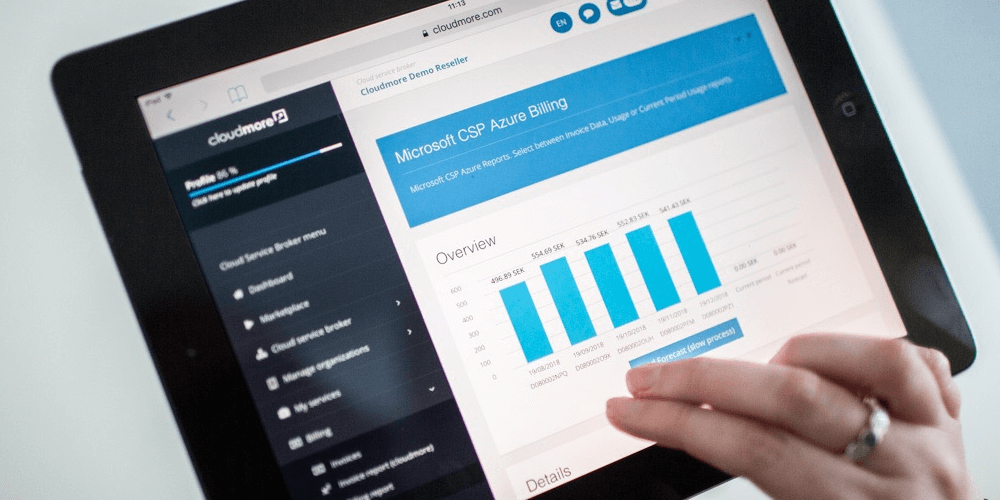Introduction
The cloud has significantly transformed how we do business, offering flexibility, scalability, and cost savings. However, like any resource, it requires effective management to ensure that costs do not spiral out of control. Microsoft Azure, one of the leading cloud service providers, offers plans to help businesses manage their cloud expenses efficiently. One such scheme is the Azure Savings Plan.
Understanding the Azure Savings Plan
Azure's Savings Plan allows users to enjoy substantial discounts off pay-as-you-go rates in exchange for a one or three-year spend commitment. This approach offers a flexible model that aligns with a business's consumption pattern, allowing them to forecast and manage costs effectively. The billing system under the plan applies benefits to usage with the largest discount percentage first, ensuring that businesses maximize their savings.
For the application to be most effective, the Azure billing system requires timely visibility into your usage. There's a 48-hour window during which the billing system continuously optimizes and updates the benefit application. Consequently, charges might fluctuate during this window, and users could sometimes observe savings plan utilization over 100%.
Azure aims to maximize the benefits you receive. If a company has multiple savings plans, Azure first prioritizes applying benefits from the three-year plan, followed by benefits from more restrictively scoped plans. This ensures the application of the best rates first and minimizes potential waste.
Azure Savings Plan for Compute: A Deeper Dive
Introduced in October 2022, the Azure Savings Plan for Compute allows eligible customers to secure reduced prices on select Azure compute services in exchange for a commitment to a specific hourly spend. Unlike reservations, Savings Plans offer more flexibility, allowing businesses to save up to 65% on compute service costs.
The services covered under the Azure Savings Plan for Compute include:
- Azure Virtual Machines
- Azure App Service (Premium v3 only)
- Azure Dedicated Host
- Azure Container Instances
- Azure Functions Premium plan
For those operating under a Microsoft Customer Agreement (MCA) or Cloud Solution Provider (CSP), the plan prices are displayed in US dollars, while Enterprise Agreement (EA) customers will see them in their local currency.
Azure Savings Plan vs. Azure Reservations
Azure Reservations and Azure Savings Plans provide cost-saving options but differ in scope and flexibility.
Azure Reservations help you save money by committing to one-year or three-year plans for multiple products. Committing allows you to get a discount on the resources you use. Reservations can significantly reduce your resource costs by up to 72% from pay-as-you-go prices. Azure Reserved Instances require customers to commit to a specific virtual machine.
Azure Savings Plans provide customers with the flexibility to commit to a set hourly spend on selected Azure compute services for 1 or 3 years, securing a discounted rate for the covered compute services and offer a broader range and flexibility.
While Azure Reservations might provide greater cost savings, Savings Plans balance it out with flexibility, making it a more attractive option for businesses with dynamic needs.
Savings Plans and Reservations can be combined, providing an even greater discount, for instance, using a Reserved Instance resource commitment for stable predictable workload and a savings plan that would cover all resources plus possible overage on reservations)
Azure Savings Plan Benefits
- Flexibility: Unlike Reserved Instances, which require a commitment to specific VMs, Savings Plans allow a set hourly spend commitment, that because the flexibility is in the applied scope, can apply to all your resources. (and at works across all regions)
- Savings: You can achieve up to 65% savings with Azure Savings Plans.
- Payment Options: Pay upfront or monthly with no extra costs.
- Regional Scope: Apply commitments across multiple Azure regions for a more streamlined cost management.
The Complexities of Azure Billing
Cloud billing, especially for robust platforms like Azure, can be quite intricate due to the vast array of services offered, the different pricing models, and the continuous usage fluctuations that customers might experience. This becomes an even bigger challenge for Microsoft Direct CSPs, as they have to manage the billing for multiple customers, each with their unique cloud configurations and consumption patterns.
Some everyday Azure billing complexities include:
- Diverse Pricing Models: Azure offers several pricing options – from pay-as-you-go to reserved instances and now savings plans. Keeping track of which customer is on which pricing model and applying the correct rates can be daunting.
- Variable Consumption: Azure usage isn't static. Customers might spin up additional resources for a short-term project and then scale down. Billing needs to reflect these fluctuations accurately.
- Regional Price Variations: Azure's pricing might differ depending on where the resources are deployed. Ensuring that the correct regional pricing is applied can be a challenge.
- Keeping Up with Azure Changes: Azure, a rapidly evolving platform, often introduces new services, updates existing ones, or adjusts pricing. Staying updated and adjusting billing accordingly is essential.
Impact of Azure Savings Plans on Billing
The introduction of Azure Savings Plans adds another layer of complexity to the billing process:
- Tracking Commitments: With savings plans, customers commit to specific hourly spends. CSPs must ensure they bill according to these commitments and track any overages.
- Re-evaluation and Recommendations: As savings plans are about consistent spending, CSPs might need to re-evaluate their customer's consumption patterns periodically and suggest adjustments to their plans to maximize savings.
- Variable Discounts: Savings plans offer discounts based on usage. The application of these discounts can vary, making it essential for billing solutions to apply them accurately.
- Managing Multiple Plans: Customers might have multiple savings plans with different term lengths or scopes. Ensuring that the right plan is applied to the right resource is crucial.
Cloudmore, a solution designed to manage such complexities, would streamline the application of Azure Savings Plans, ensuring that Direct CSPs can offer these savings to their customers without adding additional administrative overhead.
Concluding Thoughts
Azure's commitment to cost savings for its users is evident in its offerings. Whether you opt for Azure Reserved Instances or Azure Savings Plan, both options present significant cost-saving potentials based on your business's or customer's specific needs and patterns. Understanding and evaluating each model's pros and cons and how they align with your business objectives is essential.
Share this
You May Also Like
These Related Stories

Azure Billing the Easy Way

Remove Azure Plan Billing Complexities With Cloudmore
.jpg)

